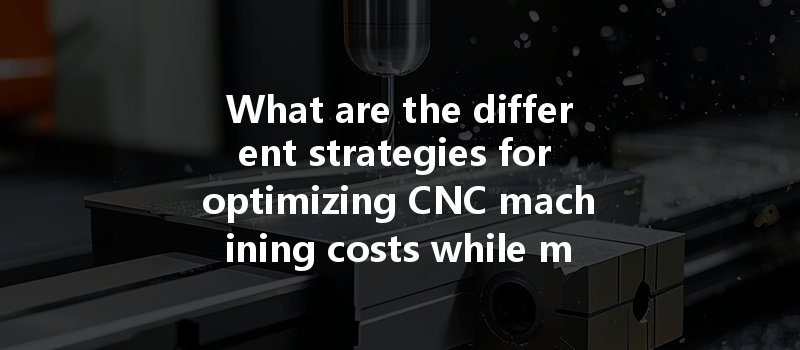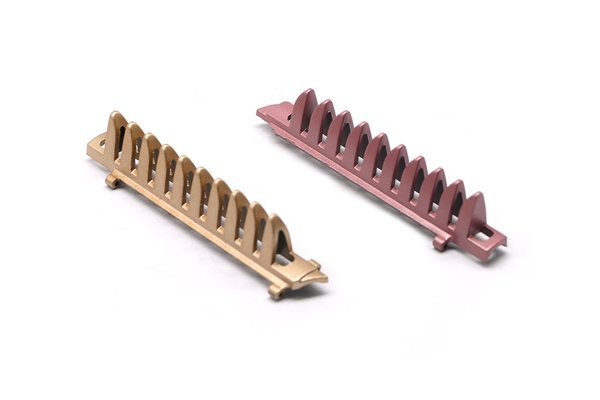Opening
Did you know that CNC machining can cut production costs by as much as 30% while simultaneously enhancing product quality? For businesses aiming to improve efficiency and reduce operational expenses, adopting strategic optimization methods in CNC machining is not just beneficial—it’s essential. In the fast-evolving manufacturing landscape, maintaining high-quality production at lower costs has become the cornerstone of competitive advantage. This comprehensive guide delves into the intricate world of CNC machining cost optimization, providing actionable insights, practical strategies, and advanced technologies to help you achieve your goals.
Understanding the Basics of CNC Machining
Before diving into cost optimization strategies, it’s essential to grasp what CNC (Computer Numerical Control) machining is. CNC machining uses computerized controls to operate tools and machinery, allowing precision in shaping and fabricating materials. The process is integral in industries such as aerospace, automotive, electronics, and medical devices.
The advantages of CNC machining are manifold. It maximizes accuracy, reduces human error, and is capable of producing highly complex parts in various materials, including metals and plastics. However, to fully leverage these benefits, businesses need to strategically manage costs associated with the process.
Key Factors Influencing CNC Machining Costs
The initial setup of CNC machines is one of the biggest cost drivers. Preparation involves programming, tooling, and calibrating machines, which can consume a significant amount of labor and time. Efficient setup processes can lead to substantial savings in both time and resources.
Solutions:
Selecting the right materials can impact both direct and indirect costs. Some materials may be cheaper but require more intensive machining, leading to longer cycle times and potential scrap losses.
Solutions:
Labor can account for a significant portion of CNC machining costs. Skilled workers are critical to ensuring high-quality outputs, but their time also comes at a price.
Solutions:
The right tools are essential to maintaining quality during CNC machining. However, tooling expenses can inflate costs significantly, especially if tools wear out quickly.
Solutions:

Strategies to Optimize CNC Machining Costs Without Sacrificing Quality
Continuous process improvement can reduce machine time and improve quality metrics. Employing methodologies such as Lean manufacturing or Six Sigma can highlight inefficiencies in the machining process.
Implementation Steps:
Involving CNC machinists during the design phase can bring insights that enhance manufacturability while reducing costs. Optimizing designs for machining can minimize complexities and reduce cycle times.
Strategies:
Integrating technology and digital solutions into your CNC processes enhances operational efficiency and can drastically cut costs.
Solutions:
Having the right amount of raw material on hand is critical to avoiding delays in production while minimizing excess inventory costs.
Strategies:
In conclusion, optimizing CNC machining costs while maintaining quality involves a multifaceted approach that includes efficient setup processes, strategic material selection, skilled labor optimization, and the right balance of tooling costs. Implementing process optimization strategies, engaging in design for manufacturability, adopting advanced technology, and practicing effective inventory management are pivotal to realizing substantial savings in production.
Continually assessing operational efficiencies and enacting solutions can result in remarkable cost reductions and quality enhancements. As manufacturing continues evolving through advancements in technology and techniques, businesses that remain agile and adapt to new modalities of CNC machining will not only survive but thrive. By prioritizing these strategies, manufacturers can elevate their profiles in competitive markets, ensuring sustainable growth and profitability.
Ultimately, the importance of optimizing CNC machining costs cannot be overstated; it resonates throughout the entire production cycle and impacts overall business performance. By prioritizing cost efficiency without sacrificing quality, companies can strategically position themselves for long-term success in the ever-demanding manufacturing sector.
—






